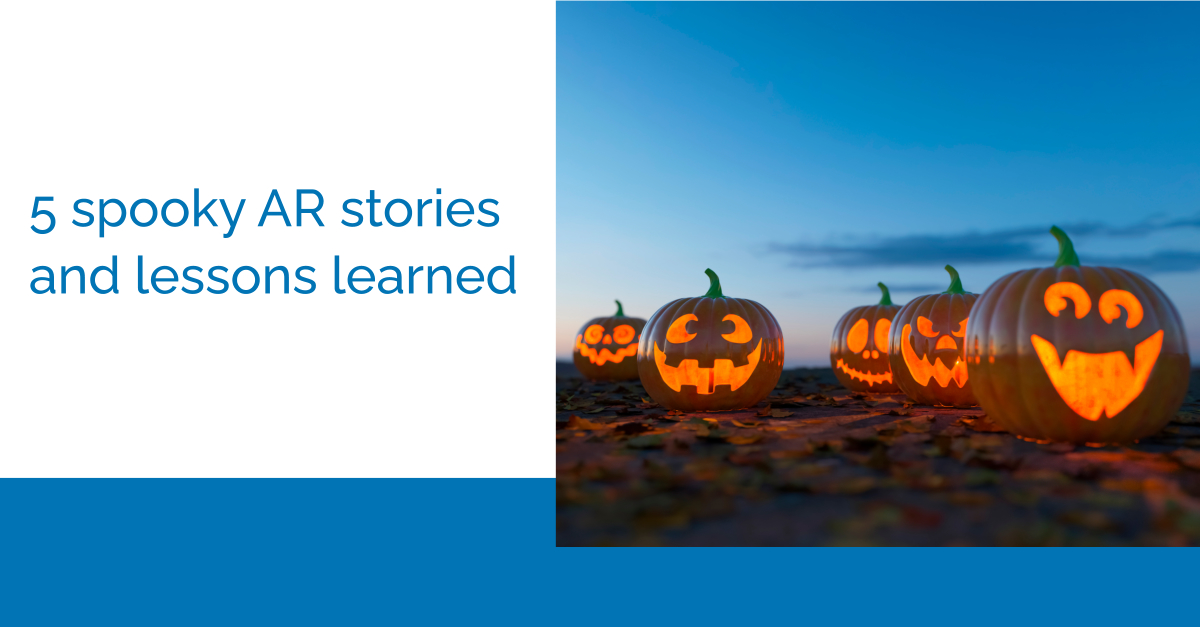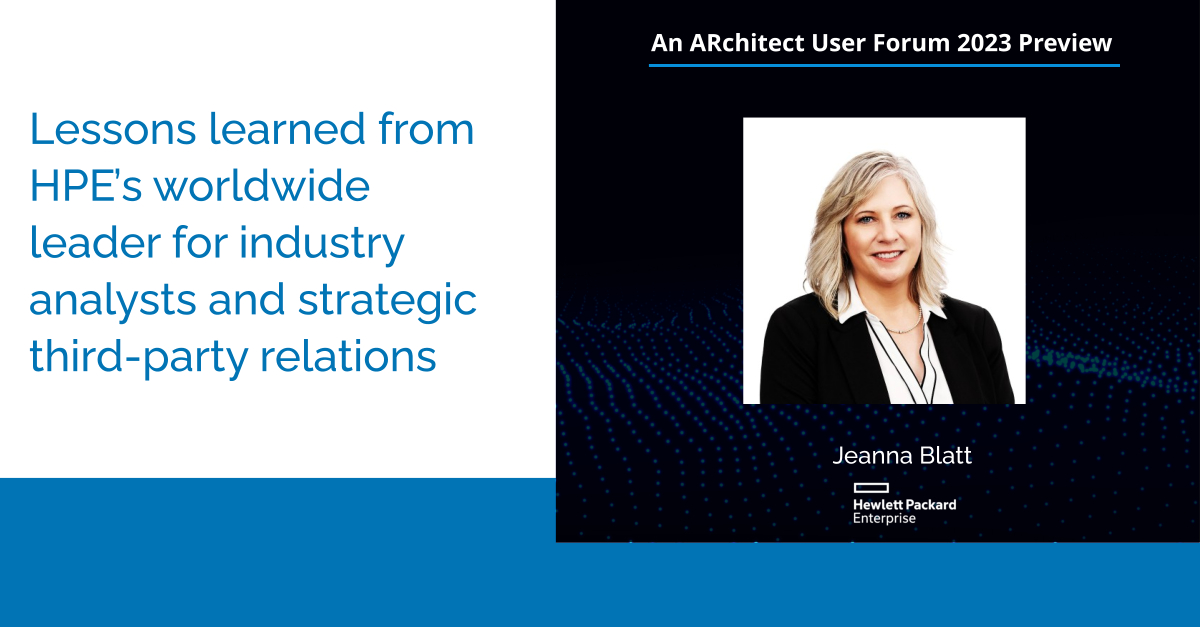Talking with Duncan Chapple, you’ll see he has a seemingly endless storehouse of analyst relations (AR) knowledge — which he imparts in a highly engaging, fun and useful way. The illuminating, off-the-cuff analogies and keen insight into “what’s next” come from knowledge he’s built up over more than two decades in the field: first as an analyst, then as an AR consultant and practitioner.
We’ve been itching to talk to Duncan — associate director and head of analyst relations for CCgroup — for our “Profiles in AR” series and share his advice with you. Below, you’ll find his thoughts on how and why AR efforts get wasted, and why well-done AR is akin to a consultation with a nutritionist (when you follow the nutritionist’s advice!).
Don’t miss Part II of our conversation, which we’ll publish next week — with Duncan’s insights on the need for content marketing in AR, analyst relations vs. influencer relations, and much more.
Q: How did you get into analyst relations?
Duncan: I got into analyst relations by being an industry analyst. I was an analyst at Ovum (a firm that’s now Omdia) and wrote about business applications — spanning corporate financial solutions, enterprise resource planning, business intelligence tools and so on. Before that, my background was in machine learning, genetic algorithms and artificial intelligence.
Since then, I’ve spent most of my time focused on AR at agencies or in consultancies. Half of these were PR firms, including Brodeur Partners, headquartered in Boston, and Lighthouse PR (now Speed Communications based in Bristol, UK). And I managed AR for a short time in-house at Deloitte.
More recently, I was managing partner for analyst relations at Kea Company, working there for almost six years. And for four-and-a-half years now, I’ve been at CCgroup here in London, as associate director and head of analyst relations. I’m fortunate to be working with such a talented group of people and a fantastic group of clients.
Q: How did your time spent as an analyst impact your perspective on AR?
Duncan: I walked away with four important takeaways:
First, I realized there is a common arc of development in every market, and almost all the vendors are moving along that arc. The differences between vendors are much less profound than they think. And what analysts are doing is evaluating vendors in relationship to the arc… in other words, how they differ from the “Platonic Form” of what a vendor in that market is supposed to look like and offer. That form or ideal evolves over time; not enough people pay attention to the trajectory.
To be clear, differing from the Platonic Form isn’t bad. That differentiation can give vendors an edge and enduring advantage. But oftentimes, what vendors think makes them special isn’t what actually makes them successful in the market. As an analyst, you’re trying to understand the differentiators — and they could be things as simple as geographic location, usability, pricing, channel, etc.
Second, as an analyst, my experience was that most analyst relations is done terribly — just absolutely so, so terribly. That’s probably why I spent 15 years as an AR consultant after leaving my analyst role. I saw that most analyst relations efforts are wasted; they’re often neither productive nor directed at the right influencers.
Third, some analyst relations people can serve as confident, capable spokespeople. There’s a big difference between the mindset of AR people who are active participants and co-creators of conversations, and those who aren’t. Analysts appreciate engaging with AR pros who also can engage with them.
Finally, I saw that the information needs of analysts are much broader than vendors and AR professionals think. Yes, analysts are interested in finding out about your business, but they also want to know about other areas. It’s like looking out a window, when the window is the vendor. Beyond the window are things like customers and market trends. Analysts are interested in the window — but they’re also interested in the view.
Q: We’d love to dig deeper into the poor AR practices and wasted efforts you mentioned. What are some of the top AR mistakes you’ve seen?
Duncan: Well, sometimes AR teams realize when they’re making mistakes. A good comparison is with diet. It’s like: I know what I should be eating… and then, I know what I’m actually eating, right? Oftentimes, there’s a difference.
So, I can sit down with a nutritionist, and they will break it down: “You need this much protein, this much carbohydrates, you can have this much fat. Do you have all your vitamins?” And so on.
It’s similar with AR. Only a very small number of analyst relations programs have that kind of “service level agreement” and specificity that you’d get with a nutritionist, where they’ll say, “We’re going to put 50% of our time into these people, 30% of our time into these people and 20% into these people.”
But it’s important to do that. To get there, you start with corporate strategy — understanding what business sectors you’re targeting and who is going to be influencing buyers in those markets. And then quantify the analyst influence: In which firms and individuals does it sit? In which countries does it sit? Allocate your efforts to align to that.
But just like with diet, when you look at what actually happens, there’s a lot of deviation. Companies often spend more time with the analysts their spokespeople like. They spend more time with the firms that call them, with the analysts who are nice and with the analysts they already know. Sometimes that’s because AR people are afraid of disappointing their spokespeople.
You won’t change opinions that way — not among enough analysts who matter. In many cases, you shouldn’t spend much time on the people who are in love with you; they’re already in love with you. And don’t focus too much on the people who hate you; you won’t be able to shift them.
But among the influential analysts, try to work out: Who are the people who could be turned into advocates?
What can we do to increase evangelism and awareness? Don’t be afraid to significantly scale back communications with (or even turn your back on) the others.
Generally, analyst relations programs think they have tiering like this, but they don’t have that kind of quantified, dietician-like assessment. At CCgroup, one of the advantages we bring — because we’re working across 15 or 20 analyst relations programs at a time — is a consistent methodology for getting the best possible allocations among the different “food groups” of analysts who matter to clients.
Q: Tell us more about CCgroup. How do you work with clients?
Duncan: CCgroup is a 35-year-old company with highly skilled marketing communication specialists. You might have seen we were just named technology consultancy of the year by PRmoment for the fourth year in a row. We have teams that focus on lead generation, content, media relations, and also analyst relations — the part of the business I lead.
We provide programmatic analyst relations, with the ability to do everything from “soup to nuts”: identifying strategy and analyst targets, developing messaging and positioning, prepping spokespeople, attending briefings and extracting insights, developing competitive analysis, and equipping sales with analyst content and insights for amplification.
About half of the firms who come to us are well-established companies — sometimes with hundreds of millions of dollars in revenue — with little-to-no analyst coverage in the past year. Sometimes that’s because their businesses are in a niche market, with no competitive evaluations, and analysts haven’t beaten a path to their door. Other times, these companies haven’t been on analysts’ radar because analysts are increasingly focused on putting round pegs in round holes. Typically, within the first year of working with companies like this, by sparking — and bringing them into — analyst conversations, we’re able to increase their profiles in research by 250-260% on average.
And then the other half of our clients are typically strong market players, worth billions, that are well established and often driving very complex technologies.
In addition, a large part of these analyst relations clients also engages with other parts of CCgroup. When that happens, it gives us uniquely deep relationships and an even better ability to coordinate activities across disciplines.
Another thing that makes CCgroup quite different is our strong focus on conducting primary research to understand buyer behavior in technology markets. This helps us and our clients craft compelling narratives about buyer problems, market challenges and the value technology can create — rather than just talking about products. And I think that engagement in the narrative makes our clients so successful.
Q: We sometimes hear of tensions between AR and PR: whether PR people can successfully do AR, and vice versa. With you having worked at PR firms — and at firms that offer PR and AR services — do you feel like the mindsets are complementary or at odds with each other?
Duncan: I’m not a PR person (if we define it narrowly, as meaning media relations) and have never worked in PR. But as you mentioned, I’ve worked for PR consultancies, offering media relations and analyst relations in separate specialist teams.
My observation is that what analyst relations people tend to think PR people do isn’t what successful PR people do. A really good example of this is with press releases. PR people have to produce press releases, of course. But good coverage never comes from press releases. Skilled PR people know that coverage comes from understanding the reporter or influencer you’re targeting — understanding them as individuals, pitching the news to them individually, and crafting a narrative suited to their interests and beat.
So many things that AR people talk about as the behaviors of “bad” PR people — lack of personalization, lack of attention to developing relationships — are also bad AR behaviors. And whether you’re in AR or PR, if you start a conversation with what’s on the vendor’s mind — rather than what’s on the mind of the influencer you’re trying to shift — you’re not going to be as successful.
Of course, analyst and journalist audiences consume information differently, they have different temperaments, and they want different kinds of content. So, AR and PR work should be done by specialists. But it’s important to understand that these are all types of marketing communications. And the starting point for them has to be business strategy — and understanding the buyer problems you’re trying to solve and how you’re positioning yourself in the market. Good PR people understand that.
Q: Apart from analyst relations, what do you enjoy doing in your free time? Can you share some of your hobbies?
Duncan: Like many Europeans, I speak a handful of languages well enough to buy a meal and rent a bicycle. And one of the advantages of being in Europe is the ability to explore, and to visit friends and clients all over the continent.
CCgroup has a ‘Work from Europe’ policy which allows us to take our laptops to another country and work remotely for up to a month at a time. I took my laptop a few weeks ago and worked in Spain — first in the Canary Islands and then out of Bilbao. And just before Christmas, my laptop and I were in Florence and Rome for two weeks. Even though my Spanish and Italian are pretty much at the level of explaining that my olives are delicious, having these little conversations is so satisfying. Now that so many pandemic restrictions are over, being able to reknit this fabric of our lives is an absolutely consuming passion of mine.
I also love reading fiction translations. Translation itself fascinates me. I’ve been reading The Great Gatsby in a dual edition, in Italian and English, and it’s very satisfying to take a book you know in your own language and then rediscover it in another. You’ll often get a different perspective and pick up on nuances. That’s because, oftentimes, in writing the translation, the translator had to speak to the original author to clarify the meaning, so they can translate the idioms and metaphors into a different culture. It’s rather similar to re-explaining your technology solution in Gartner’s language, and then in Forrester’s. So, I find reading books in other languages really, really exciting.
***
Many thanks to Duncan for sharing his insights! If you’d like to connect with Duncan, you can reach him on LinkedIn.
And don’t miss Part II of our interview with Duncan, which will be published next week.



